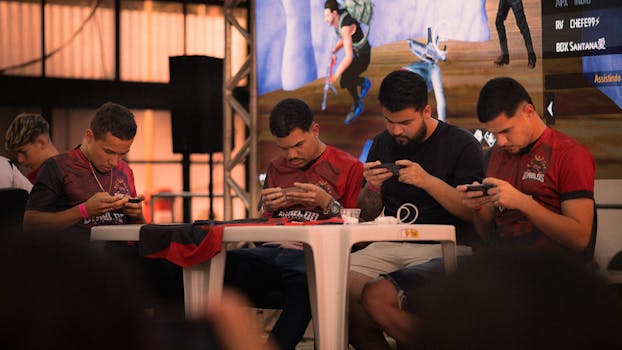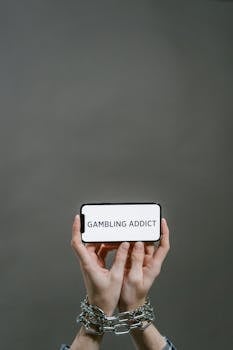Crowds cheer, players huddle over their phones, and the difference between winning and losing can come down to a single message sent at the right moment.
Mobile eSports success relies on more than quick reflexes or precise aim—it thrives on how teammates talk, coordinate, and react together, second by second.
Unlocking the foundations of winning communication changes outcomes for every competitive mobile gamer. This deep dive reveals concrete tactics and moments that set elite teams apart.
Building a Shared Language for Instant Coordination
Teams see immediate improvement in mobile eSports success by developing a consistent language for every play, role, and threat. A shared vocabulary means faster execution.
Agreeing on terms like “rotate left,” “hard push,” or “reset” eliminates hesitation during fast moves. Teams should codify every common scenario into short, clear phrases.
Using Callouts Under Pressure
In a tense match-point situation, one player calls, “Two top, one flanking!” Teammates shift instantly. Reliable callouts strip ambiguity and keep everyone in sync when milliseconds count.
Teams should rehearse these phrases in practice. When every member uses the same words for map zones or enemy positions, confusion disappears—even when excitement runs high.
Next scrim, test a basic callout checklist. Compare footage: does everyone glance where needed after each phrase? Instant feedback shapes habits for genuine mobile eSports success.
Nonverbal Shortcuts for Clarity
Gestures or in-game signals can back up voice calls when things get loud or lag interrupts. Fans watch for subtle cues—like a screen tap or a ping—to track team awareness.
Set a rule: ping location for backup before speaking. This redundancy ensures that if one system fails, the team still knows what to do. It’s like using both blinker and hand signal in traffic.
During review, note every nonverbal used. If someone misses a cue, adjust the routine, so both systems work hand-in-hand for maximum mobile eSports success.
| Scenario | Short Callout | Nonverbal Backup | Action Next |
|---|---|---|---|
| Enemy Spotted Flanking | “Flank left!” | Quick left-side ping | Rotate defense |
| Low Health Teammate | “Cover me!” | Health ping or in-game emote | Team shifts to provide shield |
| Securing Objective | “Hold point!” | Show of hands or ping location | All pause and group |
| Requesting Backup | “Need help top!” | Double ping on teammate | One rotates, others hold base |
| Coordinating Push | “Go on my mark!” | Signal countdown with fingers | Everyone advances together |
Reducing Errors by Setting Pre-Match Communication Rules
Setting clear, mutual rules for talking before a match slashes preventable mistakes. Mobile eSports success rises when everyone knows when and how to speak up.
Agree on who leads calls and when to use silence. The team decides if short burst talk or stepwise call-and-response fits better for each specific game moment.
Establishing Turn-Taking
Stick to the rule: “Only one teammate calls orders during fights.” Everyone else replies with simple “yes” or “got it.” This trims back cross-talk and keeps commands crisp.
If command needs to switch, a verbal handoff like “Switching captain” prevents two voices at once. It’s direct and reduces confusion faster than arguing in the middle of a skirmish.
- Set a single shot-caller for each match—keeps talk streamlined, especially during chaos.
- Use color words (“Blue, you lead next push”) so substitutions are unmistakable.
- Pair yes/no confirmations with visual cues—cross-checks intentions for those with lag or bad connections.
- Rehearse handoffs in practice scrims until they’re automatic.
- Record who talked during losses; review if overlaps broke the plan.
When the process gets tight, the team’s rhythm improves—boosting mobile eSports success and scoreboard position with every round.
Silence Spells Focus in Key Moments
Teams use a “silent 10 seconds” rule before major plays. Everyone listens, absorbs the plan, and acts as one. It’s like a band holding tempo before a tricky passage.
Every second spent quietly focusing helps players notice cues and avoid last-second fumbles during critical mobile eSports success moments.
- Enforce silence right before major objective rushes—lets final instructions settle, tamps down nerves.
- Mute mics unless essential during clutch plays—not every split-second movement needs narration.
- Use hand signals for all-in pushes: eyes up, hand raised, go on drop.
- Rely on preset emotes in noisy venues—no words lost to background fan noise.
- Block external comms (social, chat apps) to maintain full-team absorption during high-stakes matches.
Truly synchronized teams can almost hear each other breathe—even in chaos—ensuring top-tier mobile eSports success and tight match finishes.
Syncing Timings: When to Speak, Pause, and React
Controlling pace—when to update, wait, or push the tempo—translates to smarter decisions. Players who time talk well claim more mobile eSports success in tournament brackets.
Stress triggers rambling or silence. Teams that rehearse talk-pause rhythms create room for quick hidden strategies or lightning reflexes on contact.
Stacking Info for Smart Reactions
During fast rotates, stack info: “Three mid, ammo low, rotate now,” and then pause. Allow two seconds for everyone to process and reposition as one unit.
Repeating this structure until automatic creates a better rhythm. Players act decisively, as all information drops in one clear burst before movement—not during.
After each round, debrief: Did anyone miss the call? What was the timing cue—voice, in-game timer, or ping? Adjust timing on the next practice match.
Synchronizing Reaction Times
A team agrees, “After the attack call, act on beat two.” Players nod, pulse quick, then rush in-sync. This mimicry matches a sports team launching a play after a whistle.
Set a visual or sound cue (like “Go!” or a map ping) so nobody goes early or late. Winning or losing positions in mobile eSports success can hinge on a single mistimed step.
Review video. Did any teammate jumpstart the play or lag behind? Reward tight executions with team shoutouts, turn breakdowns into new timing drills before the next tourney.
Learning from Miscommunication: Corrections That Stick
Each fumbled call or missed backup offers feedback for building stronger communication habits. Teams that review these mistakes foster longer-term mobile eSports success.
After-action reviews clarify what broke down. Was it message choice, timing, or a missing visual cue? Correct causes, not just symptoms, for future rounds.
Fixing Vague Commands with Precision
Consider, “Over there, quick!”—everyone looks for clarification. Compare to, “Enemy top stairs—two seconds window!” Specific messages direct team energy and limit wasted motion.
Swap each generic callout for a name-location-time phrase. Rotating in “Stairs, now!” instead of “Go!” sends all attention to the same spot, creating tighter team plays.
Record and chart callout errors over a week—teams can gamify improvement, tracking “clarity scores” alongside leaderboard performance for measurable mobile eSports success gains.
Translating Emotional Feedback into Targets
Post-loss, some teammates slump and go silent. Others vent—”We lost focus!”—but don’t offer fixes. Assign a “mood captain” to translate emotion into actions: “Let’s rewatch the last round—find where nerves spiked.”
Spot emotional trends early. If nerves erode trust, the captain uses a set phrase: “Reset, trust the calls.” Simple ritual phrases can snap the team back into collaborative mode.
After each match, take two minutes for silent body language review. Who looks tense, relaxed, angry? Use these cues to pre-plan focus resets for better mobile eSports success next time.
Integrating Communication Tools and Game Features
Smart teams use all available tech—voice apps, quick chat, in-game pings—to streamline information flow and keep every member supported during every mobile eSports success surge.
Choose tools that combine clarity and speed. Confirm all teammates train with the same versions, so nobody loses sync due to app updates or accidental setting mismatches.
| Tool | Strength | Weakness | When to Use |
|---|---|---|---|
| Discord Voice | Crystal-clear audio | Dependent on connection; outside app | Practice, off-platform strategizing |
| In-game Quick Chat | Instant, built-in | Limited phrases | Public or mixed-skill lobbies |
| Emoji/Emote Signals | Visual, non-verbal | Subtle, can be missed under stress | High-noise events |
| Team Map Ping | Precise locational info | Requires map familiarity | Objective calls, rotations |
| Party Text Chat | Persistent, reviewable | Slow, less real-time | Between rounds, long-term planning |
Pre-Game Tool Checklists
Before starting, teams should walk through a simple checklist: test headsets, update apps, run a ping test, and agree on primary and backup communication channels.
Checking tools before every match ensures the squad avoids preventable mishaps and maximizes mobile eSports success from the first second of play.
Using Game-Specific Features
Some titles allow team markers, timed pings, or even message macros. Assign a “feature scout” to research and demo these add-ons for the team each week.
Trying and reviewing one new feature per week lets teams quickly spot upgrades or bug risks, building mobile eSports success by staying ahead of tech evolutions.
Practicing Communication Offline for Real-Time Payoff
Teams strengthen in-game talk by working communication exercises without screens. This boosts trust, reduces nerves, and translates into sharper mobile eSports success on match day.
Role-play mini scenarios: assign roles, set time limits, and simulate decision-making under pressure, such as “You’re pinned behind cover—call for backup and escape.” Practice until it feels natural.
Mirroring Exercises for Fast Trust
Pair teammates and ask one to describe a map feature or problem in ten words or less while the other reconstructs the situation with eyes closed. Fast mirroring builds sharper instincts for short, crisp calls.
Analyze the outcome together. Did the listener get it right? What words caused confusion? Swap pairs and repeat for higher team-wide mobile eSports success.
Graduated complexity—moving from simple spots to full plays—gives everyone confidence to signal under real match pressure.
Review Sessions for Fine-Tuning
Hold brief, focused debriefs after each live or offline session. Replay calls and moves—stop at each mistake for rewinding and drafting sharp alternatives.
Assign each player a “moment to lead” during review. This cultivates shared responsibility for communication, not just leaving it to the captain or loudest teammate.
Circular feedback, with each member chiming in, ensures every voice is valued and all routines point toward the team’s next mobile eSports success.
Sustaining Growth: Keeping Communication a Living Practice
Teams eager to maintain their edge treat team communication as an evolving skill needing regular updates. This discipline pays dividends in every mobile eSports success run.
They hold monthly clinics—reviewing mishaps, introducing new lingo, and adding game-specific shortcuts learned from rivals or events. This keeps the squad ahead and avoids stagnation.
Adapting During the Competitive Season
Pressure builds during high-stakes tournaments. Teams rotate communication duties temporarily so every player adapts to leadership or support roles, creating resilience when under stress.
Those who rotate these jobs gain wider game sense. Everyone gets a turn to command, listen, and recalibrate—building flexibility and deeper bonds for future mobile eSports success.
After big events, hold honest review meetings. Acknowledge what worked and what lagged behind. Prune old habits, seed new phrases, and ensure communication always matches the team’s evolving playbook.
Staying Motivated with Progress Tracking
Capture clips where team calls saved a round—or cost a victory. Share them privately and craft a “play of the week” for communication, not just flashy highlight reels.
Display team comm stats (accuracy, handoff speed) on a shared board. Turn improvement into friendly rivalry, reminding everyone that clear talk is as vital as headshots for mobile eSports success.
Share best practices with newcomers, encouraging constant learning. Senior players mentor with scripts, and everyone celebrates each milestone together—cementing healthy team culture on and off the app.
Confident Teams Win: Communication as the Key to Success
From first scrims to pro brackets, mobile eSports success links directly to communication that’s clear, precise, and reflexive under pressure. Every teammate, not just the captain, owns this outcome.
Developing a shared language, setting pre-match norms, drilling timing, and learning from each mistake transforms scattered players into a cohesive squad ready for any event’s pressure cooker.
Every new season offers a chance to iterate—test new tools, swap routines, and build trust with every round. Consistent, focused communication becomes the difference-maker the next time the leaderboard resets.



